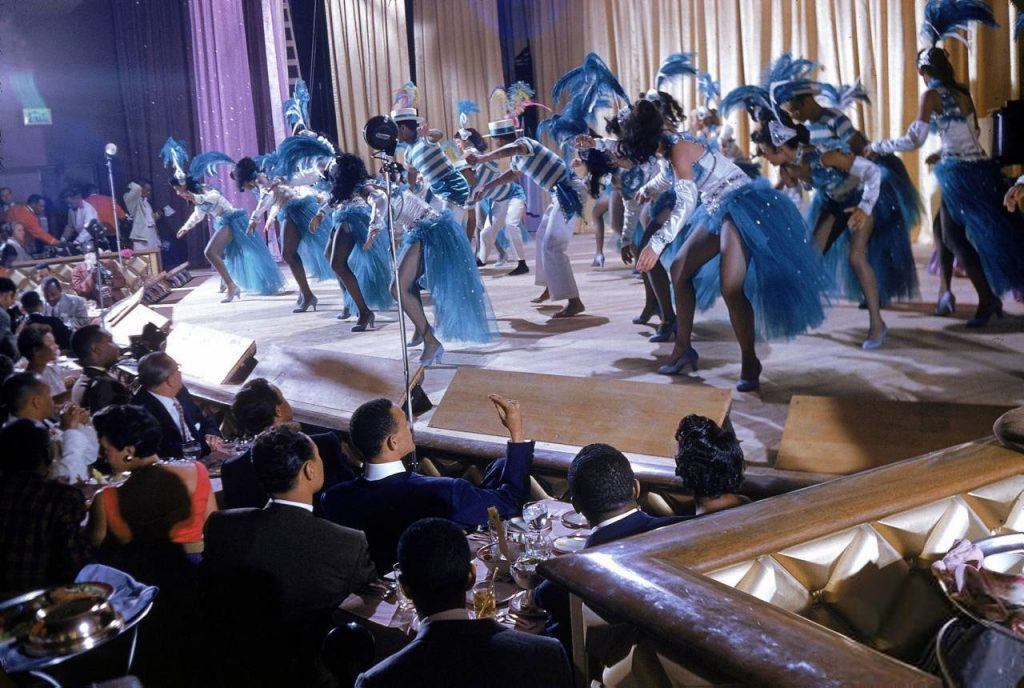
Forty three years later in May 2003, the famous but now vacant hotel-casino burned to the ground, leaving only the historic sign, tower and façade. In June 2010, the hotel building behind the front façade and tower was demolished.
In July 2010, the City of Las Vegas and the Las Vegas Historic Preservation Commission approved the demolition of the remaining portion of the building, despite fierce opponents and its standing as both a local and a national historic landmark in the National Register of Historic Places and the Las Vegas Historic Property Register.
Source: article contributed by Claytee D. White in blackpast.org
Moulin Rouge: America's First Integrated Hotel-Casino...Sort Of
The Moulin Rouge opened in Las Vegas, Nevada, in 1955 and became the first racially integrated hotel-casino in the city. The new casino, built by white businessmen, attracted a sizable number of African American entertainers who realized they no longer would have to stay in segregated rooming houses on the Westside, the city’s black community.
Opening in May 1955 to standing-room-only crowds of black and white patrons, the all-black stage show included eight dancers, six showgirls, and four male dancers. Benny Carter and the Hines Brothers graced the stage.
Photos from the opening night performance appeared on the cover of Life Magazine in May 1955. Over the next weeks, the line-up expanded to include Dinah Washington, the Platters, and Lionel Hampton.
Pearl Bailey and Peter Lawford gambled in the casino while Sammy Davis, Jr. and Frank Sinatra were among the frequent guests and occasional entertainers. The casino host was Joe Louis, the ex-heavyweight boxing champion who owned a two percent interest in the Rouge.

Politicians, celebrities, and high-rollers peppered the audience. And the entertainment was the best in the city since the paid acts were often followed by other entertainers in the audience who gave impromptu performances.
And the entertainment was the best in the city since the paid acts were often followed by other entertainers in the audience who gave impromptu performances.
Despite its initial popularity, the Moulin Rouge closed its doors six months later. Its brief run as a successfully integrated casino, however, prompted black and white political activists to campaign for the integration of the Las Vegas Strip. They achieved that goal in an agreement reached ironically in the now-closed Moulin Rouge on March 26, 1960.

Politicians, celebrities, and high-rollers peppered the audience.
The Moulin Rouge was a showplace that rivaled any hotel on the Las Vegas Strip. Waiters, hired from among the best hotels across the country, served international gourmet cuisine in the Deauville Room while wearing tuxedos with white gloves.
Hazel Gay operated the dress shop that was stocked to capacity with the finest fashions available. The huge bar was constructed of elegantly polished wood.